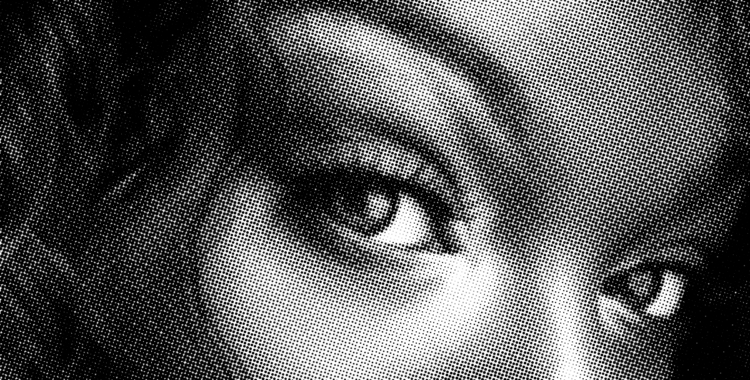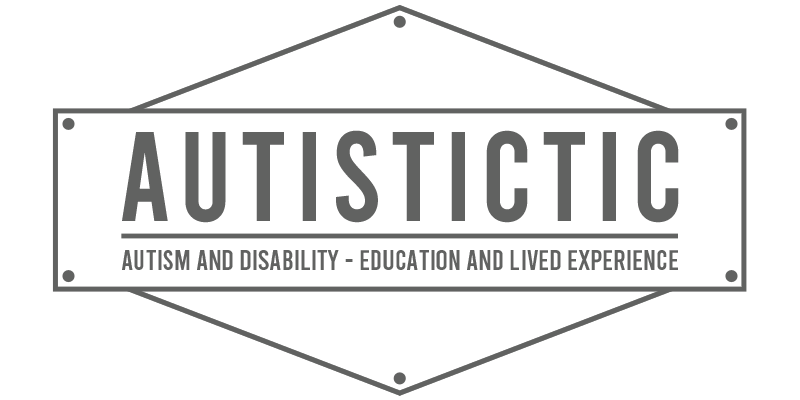
EYE CONTACT

“LOOK AT ME WHEN I’M TALKING TO YOU!”
Eye contact happens when two people look into each other’s eyes. Non-autistic people do eye contact all the time. They do it to show that they are listening, to show they respect the other person, to demonstrate their own confidence, and to communicate non-verbally. It’s also a very intimate thing to share with another human being.
Not making eye contact is commonly seen as not paying attention, a lack of respect, a lack of confidence, or wanting to hide something.
When someone doesn’t make eye contact, other people will often attempt to “correct” that. They usually do so with demands like “Look at me when I’m talking to you!”. Adults especially try to correct children who don’t make eye contact.
The fact that autistic people tend to avoid eye contact is widely known. What isn’t widely known are the real reasons why, that it doesn’t need to be “corrected”, and that attempting to do so is harmful.
AN OVERLOADING CHAOS OF CUES WE CAN’T PROCESS
You may already know that non-verbal social cues are something autistic people tend to struggle with. Thus eye contact, which works to send and receive non-verbal social cues, is something many autistic people struggle with.
When non-autistic people look into someone’s eyes, they receive non-verbal information that their brain can process.
When autistic people look into someone’s eyes, they may receive non-verbal information that their brains can’t process.
This means that eye contact can fill an autistic person’s brain with an ongoing flood of overwhelming, chaotic information that it can’t process.
The amount of information received via eye contact is huge. The speed with which the information is received is fast. That’s why becoming overwhelmed by it can happen very quickly. Autistic people may suffer overloads, shutdowns, and meltdowns as a result.
WE CAN EITHER LOOK AT YOUR EYES OR LISTEN TO YOU – NOT BOTH
A side effect of the chaotic overwhelm from eye contact can be that there is no capacity left to process other information. For example, auditory input from someone speaking.
Often an autistic person will look away when someone is talking to them. Society commonly considers this “bad”, because non-autistic people think it means that the autistic person is being rude, or not paying attention.
The opposite is often true: An autistic person avoiding eye contact while someone talks to them often does so because it allows them to pay attention. Autistic people often struggle with processing several things at once. They can then either look into someone’s eyes, or understand what that person is saying – not both.
When auditory processing doesn’t work anymore because eye contact takes up all processing capability, speech can sound like a foreign language: nothing but random sounds that make no sense.
In turn an autistic person forced to look into someone’s eyes, may also not be able to say what they wanted to say, because the eye contact is so distracting and overwhelming.
EYE CONTACT IS INTIMACY
Looking into each others eyes is a very intimate thing. Long, longing gazes between lovers. The saying that “Eyes are the window to the soul.”. Eye contact establishes an intimate connection between two human beings. Knowing that autistic people tend to experience everything more intensely, it is then not surprising, that this intimacy may be too much.
Autistic people may not be able to cope with it. They may also simply not want to share this intimacy with people. An autistic person might be able to make eye contact with some people, but not all. This autonomous decision who to share intimacy with, must be respected.
EYE CONTACT CAN BE HARMFUL
When an autistic person forces themselves to make eye contact, it can be physically and mentally exhausting. One needs to always be aware where one is looking. One needs to always control ones gaze. That takes a lot of energy, unnecessarily, that is then often missing elsewhere.
For some autistic people, eye contact is physically painful. Autistic people have reported pain in their eyes, burning and watering eyes, and headaches. Some have reported becoming nauseated and dizzy. Eye contact can also trigger stress and anxiety in autistic people. Some just feel uncomfortable, for others it causes severe distress.
BUT IF THEY DON’T LOOK AT ME I DON’T KNOW…
Non-autistic people believe that eye contact is necessary for proper social interaction. This is a big reason for why they keep insisting that autistic people learn it. Autistic people, however, know that eye contact isn’t necessary for social interactions. They simply replace its (rather unreliable) functions with direct communication.
If you want to know if someone is listening, you can ask “Are you listening to me right now?”.
How they respond to something you said may also tell you whether or not they are listening.
If you want to know what someone is feeling or thinking, you can ask them.
If you want someone to know what you are feeling or thinking, you can tell them.
There is always more than one way of doing something. So instead of insisting on that one way that doesn’t work for one party, find a way that works for both.
NO EYE CONTACT – NO PROBLEM
Some autistic people have no problem with eye contact. Some like it. Some even need it. And many autistic people who wouldn’t naturally make eye contact can learn to force themselves to. This is being done to us in many therapies. That doesn’t mean it’s necessary, or healthy.
In our society, autistic people are currently taught by default that not making eye contact is abnormal, and not acceptable. They are taught that it is a requirement, and they learn that non-autistic people simply don’t care about the negative effects it has for them.
Non-autistic people on the other hand aren’t taught by default that autistic people may not make eye contact, why that is, and that it is perfectly fine and something to just accept.
This imbalance is what needs fixing – not autistic people not making eye contact.
So don’t teach autistic people to make unnatural eye contact, in an attempt to make them (seemingly) more non-autistic. Instead, non-autistic people need to learn why autistic people naturally don’t do it, and simply accept it.
Just like autistic people already simply accept that non-autistic people do make eye contact. Even if they themselves don’t, and might not be able to understand why anyone would voluntarily do it.
Or how would non-autistic people feel, if autistic people went around telling non-autistic people to stop looking into other people’s eyes?
So the next time you see someone isn’t making eye contact, just accept it. Once you let go of the arbitrary rule that it is required, you will see that not making any is no problem.

Leave a Reply